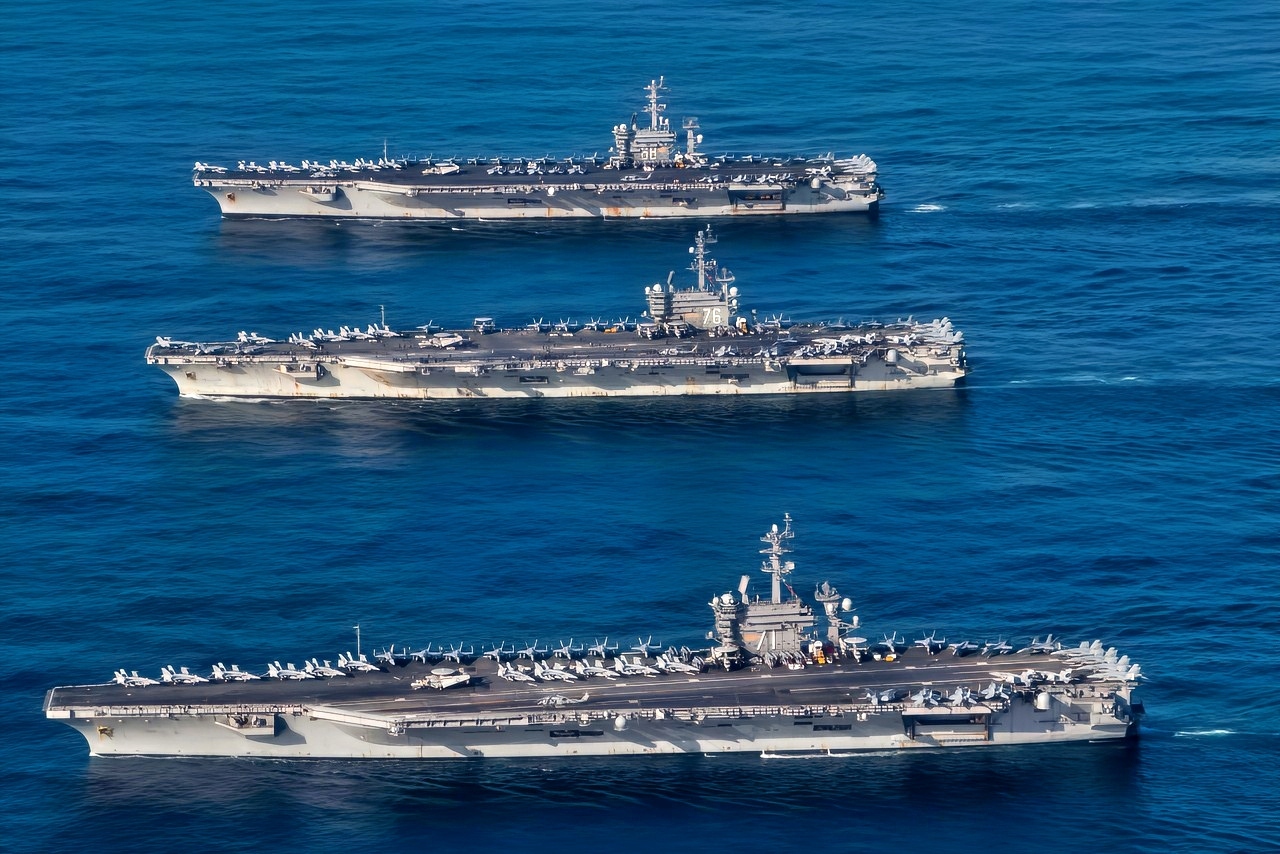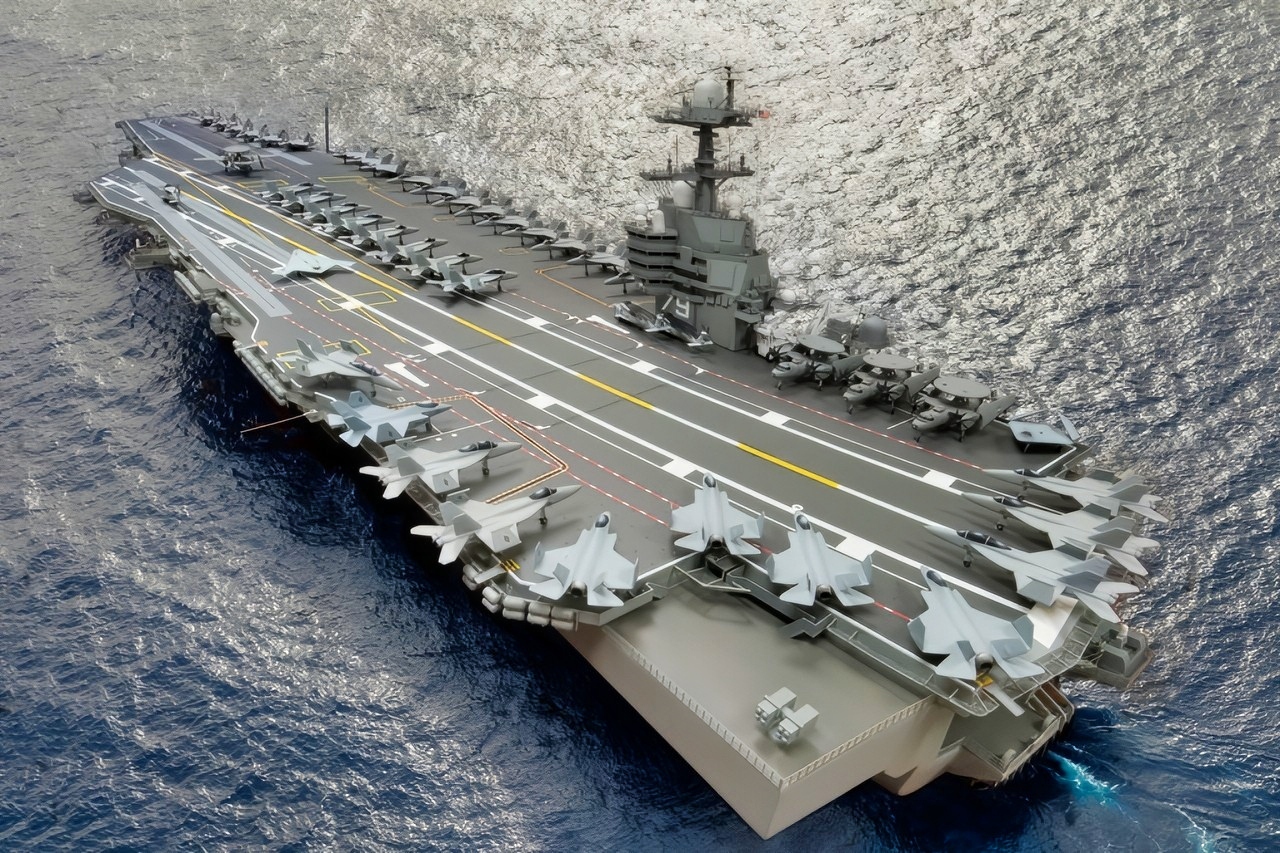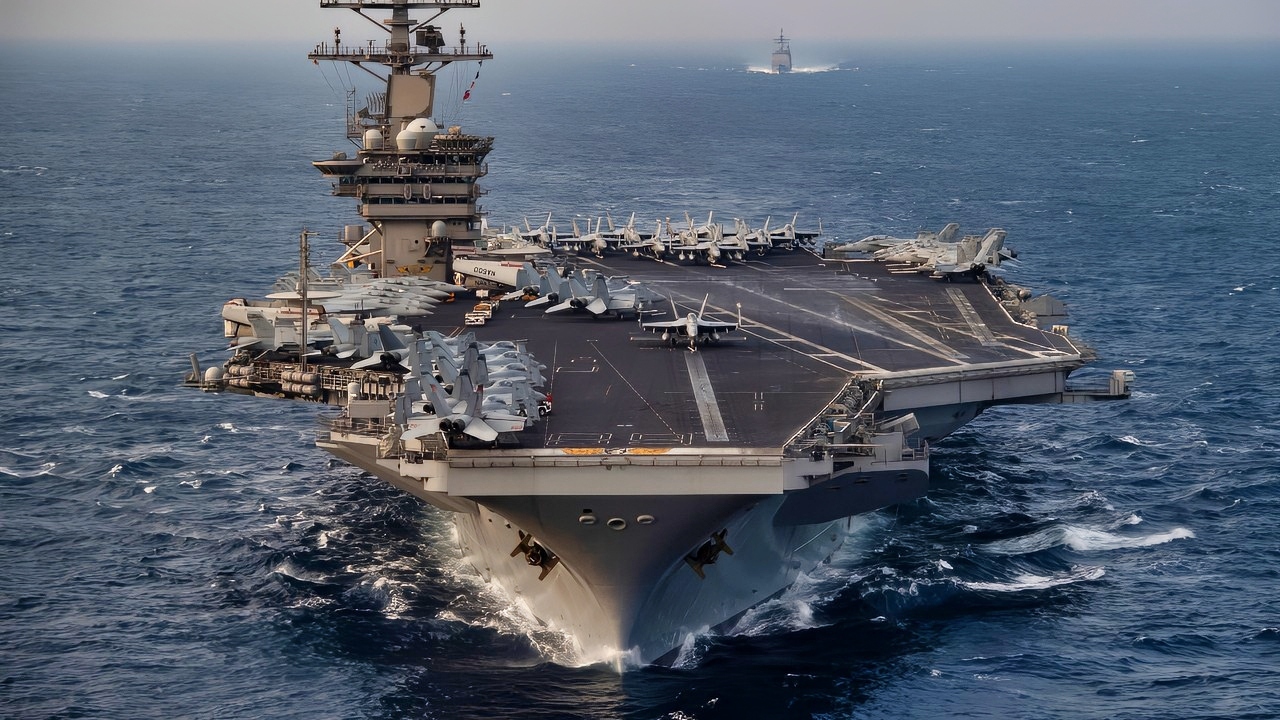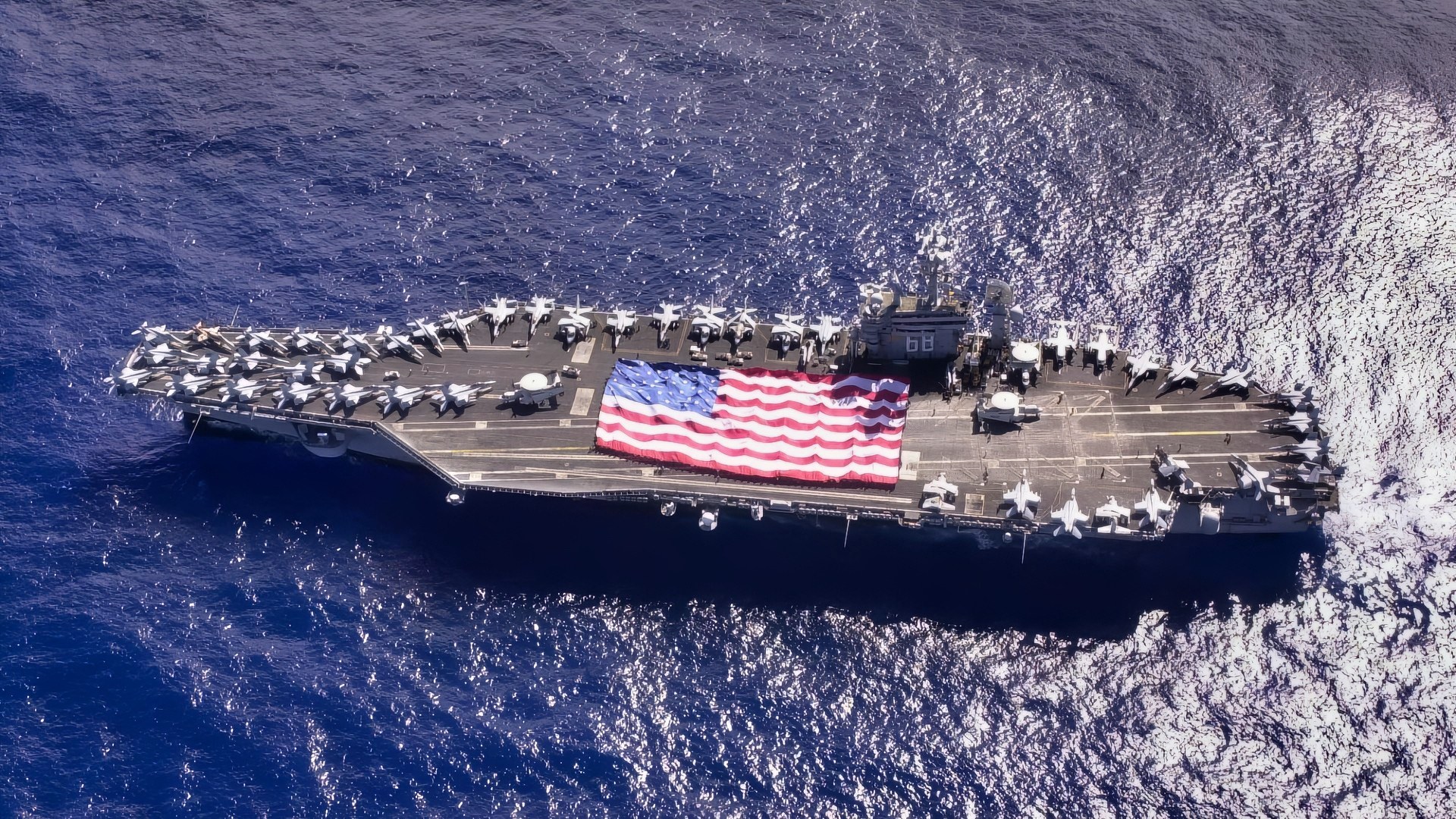Key Points and Summary – The USS Nimitz, the U.S. Navy’s oldest carrier, is set to retire in May 2026, ending a 50+ year career.
-This scheduled retirement coincides with delays in the new Ford-class carriers, raising concerns about a potential gap in the Navy’s 11-carrier fleet during a period of high global demand.

The U.S. Navy aircraft carriers USS Nimitz (CVN-68), USS Theodore Roosevelt (CVN-71) and USS Ronald Reagan (CVN-76) underway in the Western Pacific on 12 November 2017. The strike groups were underway and conducting operations in international waters as part of a three-carrier strike force exercise. This was the first time since August 2007 that three U.S. Navy carriers operated together. In 2007, USS Kitty Hawk (CV-63), USS Nimitz (CVN-68) and USS John C. Stennis (CVN-74) participated in exercise “Valiant Shield”.
Proponents argue retiring the aging, maintenance-heavy Nimitz frees up resources.
-Opponents advocate for extending its service life to provide crucial surge capacity and strategic insurance against further delays.
-The decision highlights the immense strain on the U.S. shipbuilding industrial base, impacting both maintenance and new construction.
USS Nimitz: The Aircraft Carrier Retirement Debate
The USS Nimitz (CVN-68), the U.S. Navy’s oldest active aircraft carrier and the lead ship of her class, is slated to retire in May 2026 after more than 50 years of service.
Her final home-port shift – meaning her final journey to a permanent base of operations – is scheduled for April 12, 2026.
She will move from Bremerton, Washington, to Naval Station Norfolk, Virginia, where the deactivation process will begin.
The decision has been driven by the Navy’s modernization plan to phase out older Nimitz-class carriers as new Gerard R. Ford-class ships enter service. But in an era of rising global naval competition and rising carrier demand, the core question is whether retiring the Nimitz now is a strategic misstep or a necessary retirement.
Why It Matters
The Nimitz has formed a central pillar of U.S. naval power projection for decades. Its scheduled retirement comes at a moment when carrier strike groups are in high demand across the Indo-Pacific, Middle East, and Europe.
With the next-generation USS John F. Kennedy (CVN-79) and Ford-class vessels delayed or still in trials, the removal of CVN-68 from the fleet risks making America’s carrier force weaker than it needs to be.

USS John F. Kennedy Aircraft Carrier Model
Historically, the U.S. aims to maintain an 11-carrier naval fleet – and dropping one hull before its successor is fully operational complicates deployment scheduling, readiness, and posture.
In simple terms, the U.S. Navy won’t have the vessels it needs to defend and project power.
Moreover, the industrial base that builds and overhauls carriers is under immense strain, making timing critical.
The question, then, is not only about one ship’s retirement, but about whether the Navy can preserve uninterrupted carrier availability as it leaves service.
The Case for Retiring Now
Proponents of retirement argue that the Nimitz must leave service now because she has reached the logical end of her operational lifecycle.
Commissioned in 1975, she has already completed her nuclear refueling and complex overhaul and has served far beyond the typical 50-year lifespan of Nimitz-class carriers.
The ship’s nuclear reactors, combined with wear to the hull and its aging systems, place a heavy maintenance burden on the vessel.
From manpower and yard capacity to budgetary issues, keeping the CVN-68 in service will become an increasingly costly endeavor. And by retiring her on time, the Navy is freeing up skilled manpower, dock space, and funding for newer carriers and other priorities.
Additionally, the formal contracting process for the Nimitz’s deactivation is already underway, meaning millions of dollars have already been allocated for reactor defuelling and inactivation preparation.

(Nov. 17, 2020) The aircraft carrier USS Nimitz (CVN 68) steams ahead of the guided-missile cruiser USS Princeton (CG 59) while participating in Malabar 2020 in the North Arabian Sea. Malabar 2020 is the latest in a continuing series of exercises that has grown in scope and complexity over the years to address the variety of shared threats to maritime security in the Indo-Asia Pacific where the U.S. Navy has patrolled for more than 70 years promoting regional peace and security. Nimitz Carrier Strike Group is currently deployed to the 7th Fleet area of operations in support of a free and open Indo-Pacific. (U.S. Navy photo by Mass Communication Specialist 3rd Class Elliot Schaudt/Released)
From this perspective, staying on the scheduled retirement date avoids further maintenance costs and the loss of huge sums of money already set aside for contractors.
The Case for Extending Service
While retirement may make sense because funds have already been allocated for deactivation, there are compelling arguments for extending the Nimitz’s service life by several years – or at least until the Ford-class replacements are fully operational.
Despite its age, the carrier remains combat-credible today, having undergone sweeping modern upgrades.
Not only is the airline technically still capable, but global geopolitical conditions demand that the U.S. is as prepared as it possibly can be.
With tensions rising across the Taiwan Strait, the Red Sea, and the Arctic, every additional carrier improves flexibility and surge capacity.
Extending Nimitz even by three to five years – or even up to a decade – could ensure that the fleet does not face a period of extreme pressure before the following carriers are ready.
And given the known delays on CVN-79 and other Ford-class vessels, keeping Nimitz active may just provide the strategic insurance the U.S. needs against a gap in carrier availability.
What’s the Answer?
Both sides of the argument are directly tied to industrial capacity – and determining the right course of action is by no means simple.
Keeping the Nimitz in service would place strain on shipyard capacity in terms of maintenance – but so would decommissioning the ship.
Newport News, the only U.S. yard with nuclear carrier expertise, is juggling RCOHs, new-carrier construction, and defueling and disposal work simultaneously.
The Nimitz’s retirement must be managed in a way that defueling and disposal delays do not compound existing yard backlogs.
In theory, extending service life might avoid an operational gap, but it also delays yard availability for other carrier work, potentially bottlenecking modernization. Thus, the decision is really about balancing global mission needs and industrial capacity, making it a gamble for the U.S. Navy either way.
So, what’s the correct answer? It’s hard to say. Retiring the Nimitz in 2026 is defensible from a lifecycle, cost, and modernization standpoint.
But, in today’s geopolitical environment, it is not without risk.
About the Author:
Jack Buckby is a British author, counter-extremism researcher, and journalist based in New York. Reporting on the U.K., Europe, and the U.S., he works to analyze and understand left-wing and right-wing radicalization, and reports on Western governments’ approaches to the pressing issues of today. His books and research papers explore these themes and propose pragmatic solutions to our increasingly polarized society. His latest book is The Truth Teller: RFK Jr. and the Case for a Post-Partisan Presidency.
More Military
Montana-Class: The U.S. Navy’s Superbattleships That Never Sailed
The F-35 Stealth Fighter Feels Like a Black Hole of Trouble
Russia’s Admiral Nakhimov Kirov-Class Battlecruiser Has a Warning for the Russian Navy
China’s Yuan-Class AIP Stealth Submarine Has A Warning for the U.S. Navy
Mach 6 SR-72 Darkstar Could Soon Be the ‘Fastest Plane on Earth’










